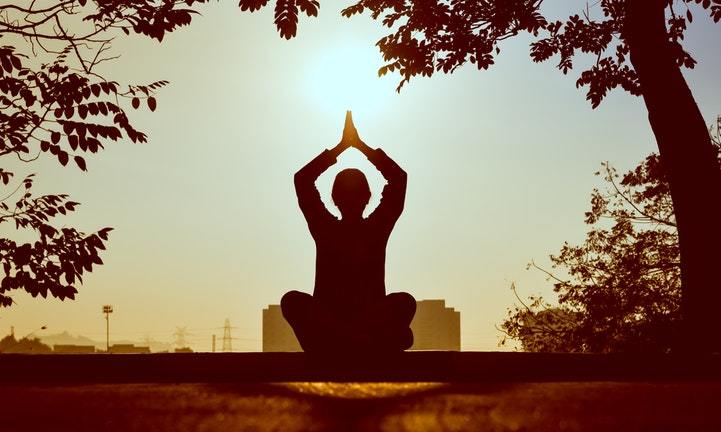Easy Steps, Meditation for Beginners
Preparing You for Meditation
Basic Yoga Sequences for Beginners
This is going to be a bit different than you’re probably use to because even though I am not a yoga instructor (I practice and research yoga poses, their effects on health and what the benefits are), I’d like to introduce a different strategy to help you better understand how each pose you hold will benefit your body as well as your mental health.
A yoga studio is best when you’re first starting out, it’s much more intimate and controlled. Unless you understand how yoga works, you will be lost in your first class or session. You may want to find a class to meet your short or long term goals. A class for a beginner can be planned for four weeks to cover the basics of understanding yoga. The following are easy steps, meditation for beginners.
Starting Yoga Class with Breathing
You can start your yoga practice with simple meditation and breathing
- Follow with Sun Salutations with a series of 12 poses and repeat the series 3 to 5 times each.
- Next, do a flow series of standing postures followed with arm balancing.
- Moving net towards the inversion with abdominal strengthening asanas.
- Adding back bends, supported shoulder stands and forward bends to go with the series.
- When ending the yoga session, lay down in a corpse pose or savasana.
- Planning an asana sequence prior to yoga class gives you benefits of understanding yoga.

Asana is the physical practice of yoga and relates to the body. Asana means “seat” in Sanskrit and translates “to be” but it is only one component.
Introduction to The Basics of Yoga
Yoga Practice Takes Just a Few Classes to Learn the Basic Poses, or Asanas
Sukhasana– The Sanskrit name Sukhasana is derived from two words;
Sukh means feeling of joy, pleasure and happiness, Asana means Posture or comfortable seat.
Steps to practice Sukhasana (Easy Pose)
- Sit straight with your legs stretched out in front of your body.
- Bend your left leg and place your left foot beneath your right thigh.
- Similarly, bend your right leg and place your right foot beneath left thigh.
- Rest the outer edge of your feet on the floor.
- Adjust your body and legs for comfort in the pose.
- The head, neck and spine must be erect (without strain).
- Place the palms on your knees or thighs.
- Keep your shoulder relaxed and elbows a little bent.
- Close your eyes and relax your entire body, then take slow, deep breaths.
- Feel every breath as it moves in and out of your body.
- If you feel discomfort, practice for a minute or less.
- Interchange the position of your legs and practice twice.
Keeping the spine straight might be tough at first, we all have a habit of sitting with our spine supported ( while sitting in a chair, driving or watching TV).
If you practice regularly to sit up straight with out support, you’ll strengthen your back muscles and prevent backache or impending back disease.
Use Sukhasana (Easy Pose) to Relax the Body
After practicing more complex meditative yoga poses for a longer duration, Sukhasana can be used to relax your body.
Even though Sukhasana is one of the easiest meditation poses, you’ll be surprised to know that retaining it for a longer duration is difficult.
Difficult because in this position the weight of your entire body is supported by the buttocks giving little space for support.
Harder meditation poses such as Padmasana (Lotus Pose) are easier to hold for longer periods. That’s because your knees are placed on the ground or they’re closer to the ground which creates a larger area to support body weight.
Use Precaution for Sukhasana (Easy Pose)
Avoid Discomfort From This Pose with These Adjustments Below
Upper Back and Neck,
Slouching or allowing your chin to jut forward while in the Easy Pose can strain your neck or upper back. Here’s what you should do to avoid this:
Lift the breastbone and think in terms of your shoulders broadening away from each other, not to far back though.
Draw you chin in toward the front of your neck and imagine the back of your neck being gentl pulled upwards.
Avoid practicing Easy Pose if you have or get severe knee pain, lower back or sciatica.
Lumbar Spine
Do not allow your lower back to curve inwards or outwards, both can put pressure on the spine.
If your back is curving inward, imagine your tailbone sinking down toward the floor. This will allow your pelvis to tilt back slightly and the lumbar spine to straighten.
If your back is curving outward, try to gently tilt the pelvic area forward. Putting a blanket or blocks under the buttocks will help the hips to raise a little, and for some, makes it easier to sit with the pelvis tilted forward sufficiently enough.
Legs
If You Have Poor Circulation or a condition such as varicose veins or edema, Be Aware, the Sukhasana Pose can restrict circulation.
Don’t pull your feet in too close to your pelvis. Placing them farther away will keep your knees from bending too much. Sitting on some padding can also keep your knees from bending excessively.
Don’t stay in the position for too long, you might consider an alternative pose, such as “Staff Pose“…

Hips
If your hips are not real flexible, you might not be able to place your knees close to the ground. This can affect the posture and strain your spine.
Yoga blocks are a great way to accomidate your hip position by placing the blocks or a blanket under your buttocks.
Placing some padding under your knees can give you more stability and help you feel more grounded in this position.

Feet & Ankles
If your knees are high off the ground, this can cause a significant degree of sidways flexion in your ankles and can be uncomfortable. The outside of your ankles may be uncomfortable touching the ground.
Place a soft padding underneath the ankles or use your yoga mat or blanket. Tuck each foot under the opposite shin ina traditional crosll-legged position.
Bring one heel in toward your groin. The other foot may rest on the floor in front of you so your heels will line up. This configuration opens your legs a little wider.
If you already take yoga classes, ask your instructor to help you modify this position so that you can get the most of it and avoid risking injury. Use padding under your ankles or buttocks to relieve many points of pressure.
This pose should be avoided if you have a knee injury or condition. talk to your doctor before you try any yoga poses.
The Benefits of Sukhasana
- Gradually strengthens your back muscles and improves your posture.
- Sukhasana, being a meditative pose, it has relaxing effects on your mind and body.
- Works as a prep pose for more difficult meditative poses.
- Creates flexibility in ankles, knees and hip joints.
- Builds physical and mental balance.
- Great for those that have a stiff body.
- Helpful by reducing anxiety and stress.
- Improves concentration for achieving an effective meditation practice.
I remember sitting like this pose growing up, now I would have problems due to bad knees. But don’t let that stop you, there’s ways around it and the instructor’s will accomodate you. They want you to be comfortable but pushing you to your goal without pushing your limit.
Yoga is getting HUGE in the United States, it’s members are growing in large numbers across this country. Yoga is so good for us physically and mentally and doctors are starting to realize the benefits of yoga and are actually prescribing it. Do something wonderful for yourself and join up.
If you have any questions or just want to comment below, please feel free
If you’d like to visit my other website, go to https://my-heart-health.com Ther are some posts on heart health and Yoga, I hope you enjoyed this article.
Wishing you well, Sherry


